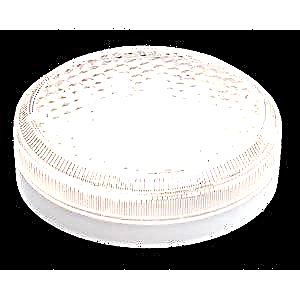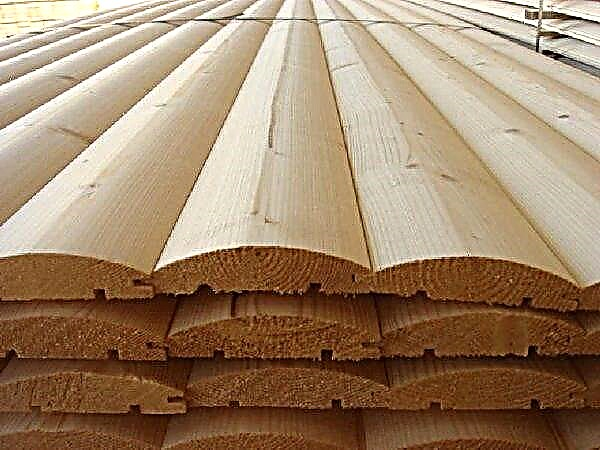Plants and stones: the history of their community in the garden dates back not decades - centuries, but there are a great many options for such a union.
Slit rolling pins can shelter not only perennials, but also representatives of dwarf tree species
From the most distant times, when a person only learned to make the first gardens, a stone was always present in one form or another in them. And today it’s almost impossible to imagine a garden without some kind of stone “history”. There are many options: individual blocks (accents or art objects), the base of a rocky hill, blocks in curbs or slabs for paving paths, and finally a pebble placer on the shore of a reservoir or dumping in a gravel garden.
The framing of the reservoir can be made of limestone or sprinkled with fine pebbles
Stone is beauty, strength and solidity. Durable, resistant to external influences and very attractive material can be used both for utilitarian, practical purposes, and for decorative purposes, and in reality one often complements the other. Therefore, on the part of homeowners and landscape designers, there is always a demand for natural stone in various forms and manifestations. Yes, this is understandable, because he is the most harmonious and undemanding partner for all plants without exception.
What types of stone are most often used in garden design?
The choice depends primarily on the functional purpose of the material. Walkways, pads and dry walls usually built of slabs (so-called “plastki”) layered sandstone, quartzite, slate, as well as from sandstone or granite pavers.
Paths, platforms and dry walls are usually built from the so-called plastochka
For rocky slides and tracksuse rubble stone and marl blocks (solid dolomitic limestone), calcareous tuff or other, more durable rocks of metamorphic and volcanic origin (schists, quartzites, porphyries, granite and basalt).
Separate stone elements in the landscape - drinking bowls, fountains, other art objects - are created from a wide variety of breeds, sometimes even from precious ornamental stones (e.g. agate and labradorite).
Read more about different breeds and their uses in the article Add a little stone.
Tip: when choosing material for garden design, give preference to rocks of soft, natural tones, different shades of gray, cream, yellowish or beige. A stone of such flowers does not distract attention from plants in the garden, but rather emphasizes their beauty.
When choosing a stone for decorating the garden, give preference to rocks of soft, natural tones
Those who prefer a laconic design of the garden space should place on their site solitary stones. The original stone - a tapeworm of an unusual shape or interesting color - will play an accent role in the landscape, and the place where it is installed will certainly attract attention.
The original solitaire stone will play an accent role in the landscape
Tip: such a corner is better to choose at the design stage, since it should be “tied up” with the routes of the road-path network and the nature of the zoning of the site.
Large single stone can be an element of a mixborder, for example, an imitation of a Scythian stone woman surrounded by meadow-steppe forbs in the spirit of Pete Udolph’s compositions. Examples of such flower beds you will find in the materials:
Sometimes, wanting a few “Revive” the space of the lawn, where appropriate, make the so-called “inset” - cut out a section of turf of an arbitrary (most often rounded) shape and place a flat block on this place, planting it with thyme, sedum, woodruff or other ground cover perennials.
Bizarre stone set as a kind of natural sculpture, say, at the focal point of an extended garden whist. There may be severalbut it’s good if it’s a little - for example, a sculptural group, a composition of three different-sized specimens.
Left: a bizarre stone as a kind of natural sculpture
Right: a drinking bowl for birds - a functional object and a stylish decorative element
Of course, the most common decorative composition with stones is rockery, or rocky hill. It is advisable to use stones of one rock, and if different, then similar in color and texture. To make rockeries look more natural, choose large enough stones that have flat faces. Other important nuances of choice are discussed in detail in the articles:
- Stone Age, or How to choose the right stones for your garden
- How to choose stones for a rockery?
- How to place stones yourself in rockery?
Important: several large stones laid in a rockery often look much more spectacular than many small ones. However, it is also not worthwhile to opt for stones of the same format, for greater naturalness it is necessary that they differ in size and shape.
How to choose plants for a garden with stones
Slide vegetable filling Depends on its size and style.
Ground-cover plants quickly “heal” and decorate a rocky hill
If rocarius imitates limestone outcrops, it is good to combine light stones with curtains of spectacular cereals, wormwood, yarrow, lilac muzzle and blueheads.
Miniature Slit Rolling Pins and Mini Rockeries will become a home for collection specimens of dwarf tree species and varieties (for example, for netted and shaggy willows, yellow leaves ‘Tiny Gold’ and ‘Golden Nugget’, Korean fir ‘Silberperle’ or miniature spruce ‘Blue Planet’).
In traditional rocky slides compact tree and shrub plants combine with pillow-shaped and creeping forms, such as cotoneaster (horizontal or Dammer), notched stephanander or Canadian derain.
In traditional stony hills, compact woody and shrubby plants are combined with cushion-like and creeping forms
They smooth out the difference in relief and the angular shape of the stones, as well as mask the sharp boundaries of the stone structure, giving it a natural look. Together with perennials, they create the effect of a monolithic slide, while emphasizing the originality of the stones used.
You can easily find the right “kids” for your rocky slide with the help of the market. View a selection of compact ornamental shrubs and compare offers from different online stores.
A large number of decorative miniature perennials - saxifrages and youngsters, gentians and jeffersonias, hoofs and sanguinaries, sleep grass and other varietal rarities - there is also a place between the slit rolling pin tiles.
Miniature slotted rolling pins and mini-rockeries will become a home for collectible specimens of dwarf tree species and varieties
The slides look the most naturalwhen they are being built on a slope. The hilly terrain allows you to implement almost any decorative types of rockeries. This can be an imitation of dry scree, a system of ledges with "mountain valleys", a rocky hollow, a gorge or a picturesque water cascade. When there is a ravine or pit on the site, these places can be arranged in the form of a gorge or mountain valley. In addition, fixing the slopes with stones and plants, in addition to the decorative effect, help prevent erosion.
Text and photo: Andrey Lysikov, Ph.D., member of the Union of Photographers of Russia.
Adding an article to a new collection
People have long noticed that the combination of living plants and lifeless stones creates a special pacifying atmosphere. We present you ideas that will transform your site and allow you to fully express your imagination.
In landscape design, stones are used as a decorative element, as well as to simulate natural conditions, for example, when creating a waterfall or alpine hill. In the first case, for decoration, it is better to take beautiful smooth stones or pebbles. In the second, coarser material is suitable: blocks with chips and cracks, shapeless boulders. Types of stones can be taken different. Limestone, sandstone, tuff, marble, granite look great.
Stones of various sizes and shades can successfully decorate any suburban area. They will look especially good in the flower garden, near ponds and benches. But in the garden near the trees it is better not to place stones, so that in the future there will be no problems with cleaning the territory.
If you don’t have a lot of stones on your site to create compositions, there are several ways to get them. The easiest, but also expensive - to buy cobblestones in a hardware store or garden nursery. Budget - look for stones in the forest fire ditches. Part of the stones can be found independently when digging the garden or ask the neighbors.
So, let's look at how you can use stones and boulders in the landscape design of your site.
DIY do-it-yourself alpine slide
You have probably heard more than once about the beauty of alpine hills (rock gardens) that mimic rocky natural landscapes. Creating such a flower garden in the country is not as difficult as it seems at first glance. There are no strict rules for decorating a rock garden; stones can be placed in a light mess. The tiered effect will give the alpine hill naturalness, otherwise it will turn out to be just a flowerbed decorated with stones.
To create a slide, you need to dig a pit and be sure to make a drainage. If possible, you can delegate this to special companies involved in landscape design.
Choose stones in one color scale and one type. Do not forget about the plants, they will need enough space, so immediately plan a place to plant. It is best to plant slowly growing and unpretentious plants: stonecrops, saxifrages, junipers, etc. And do not forget to plant the soil with herbicides before planting.
Where to use a stone?
In landscape business, there have long been many options for using stone to decorate sites. Almost any modern project can not do without this kind of decor. So, using the stones make out:
- Paths, alleys, accesses to the garage or parking spaces,
- Fountains, sides and decorative steps,
- Fences, fences, arbors and arches,
- Slides, waterfalls, "stone streams",
- The walls of the house, summer kitchen and other buildings,
- Flower beds

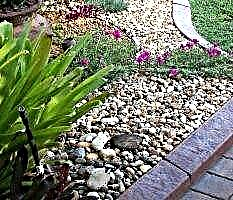

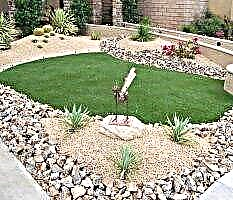

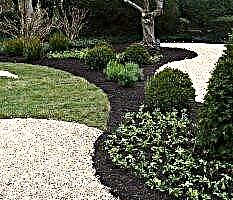
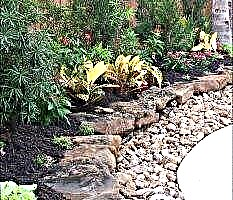


Of course, nothing limits your imagination here, stones can be used not only for decoration or cladding, but also as an independent element (or even center) of the composition.
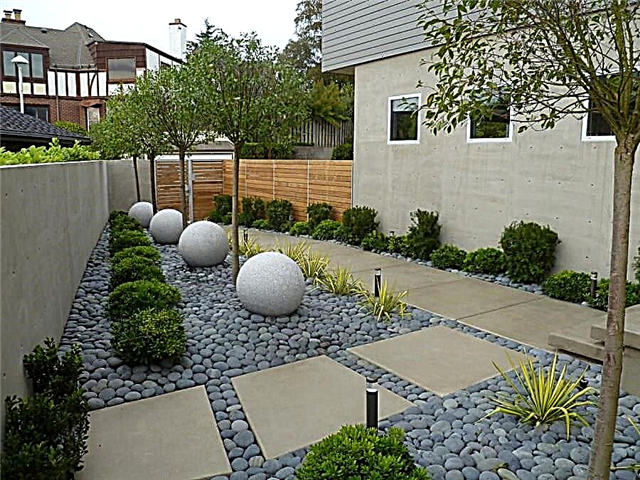
So, such projects are usually implemented through the creation of a Japanese garden or a Japanese zone on a site, because it is in the culture of this country that unprocessed stone plays a very large role, and it is simply necessary for the garden.

How to use natural stone in the landscape?
The Japanese garden is a case when you do not need to purchase a decorative stone or facing tile, invite a designer. It will be enough to create a collage yourself (suitable photos of stones in landscape design can be found on the Internet), and then put it into practice.
The more naturalness will be in the selected boulders and pebbles, the more canonical the garden will turn out. It is especially worth looking at stones of an irregular, but streamlined shape: the key to your success is the smoothness of lines and soft transitions, the absence of sharp corners.

Small pebbles should be soft and light, oval, round or bean-shaped: everything in the Japanese garden speaks of softness and peace.




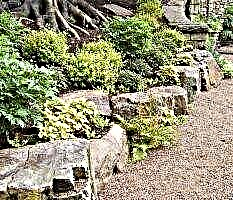




Another great solution will be the use of natural boulders in any landscape design of a landscape type, because the motto here is to imitate nature in all its manifestations. So, you don’t even need to move the boulders from place to place, process them, knocking down sharp corners, clean, split or remove moss and lichen.

All these are traces of natural impact, therefore, for a site that has sunk in the greenery and shadow of centuries-old trees, a large century-old stone will become an excellent element of decor, visually complementing the composition and as if transferring someone looking to endless ancient and mysterious forests.

For fans to put their hand directly in creating landscape design, as well as for creative people, there is another way to decorate your site with unique creations of human imagination - this is the painting of garden stones.
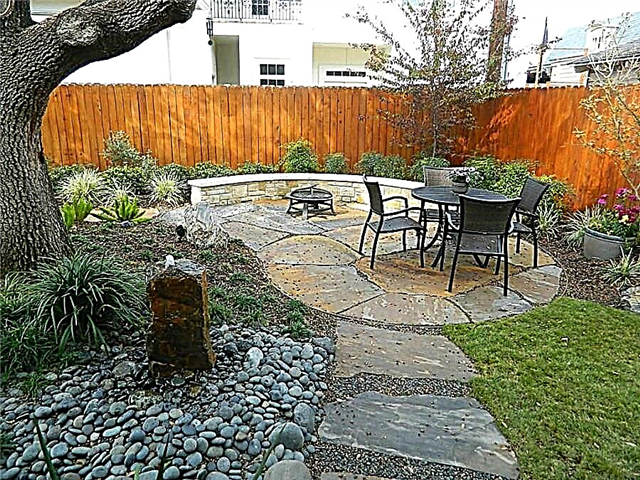
You can create complex patterns or simply fill boulders with colorful paints, achieving an incredible mixture of colors. Special craftsmen can even create a real masterpiece by depicting a landscape or portrait on the flat side of a stone.

For these purposes, it is better to use acrylic paints or paints in spray cans: they are not washed off by water and erased more slowly than others.
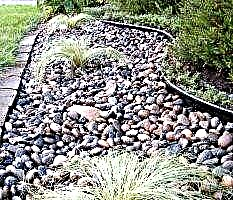




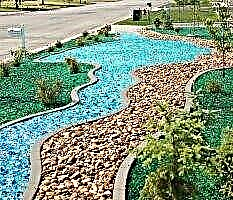


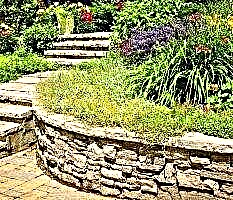
To give the picture a glossy shine and fix the image, you can cover the surface of the stone with transparent varnish, but usually a pattern with natural scuffs and slightly faded colors is much more pleasing to the eye than a huge boulder glare in the sun.

A natural stone
Granite and gneiss. Graceful and aritocratic-conservative, they are used to clad arbors, arches, fountains and buildings. The scatter of eye-pleasing shades is attractive here, which allows you to choose the perfect color solution for almost any landscape model.


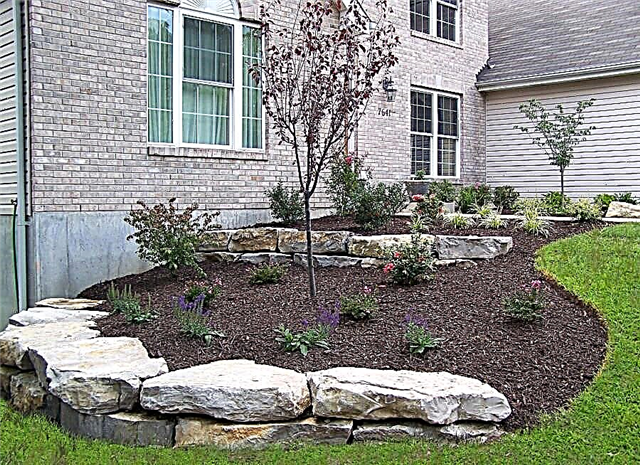
Basalt looks interesting in the design of decorative elements of the composition: the range of colors varies from smoky gray to black and green.

Soft rocks: sandstone, slate, limestone, which are most often used to design paths, paths, cladding garages or sheds. Such a stone in the decor looks neat and does not strike the eye.
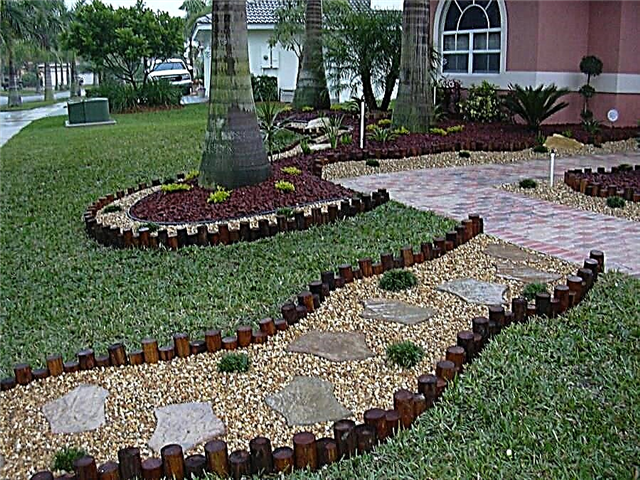
Stones, which are clusters of crystals, give the landscape a special chic. These species include marble (easy to process, unpretentious in maintenance and giving the opportunity to choose the right color from a huge number of known shades) and porphyry, the color scheme of which is expressed in various shades of red.




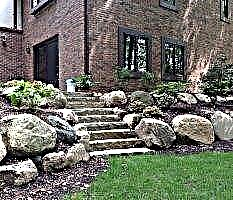




Tuff. It is a porous, lightweight stone that looks like a sponge. It absorbs moisture well and seems a good example of natural erosion - this effect is only for designers.

Fake diamond
Brick. Typically, brick is used because of its cheapness, but even with proper use it can be a good addition to the composition. Usually it is used in the design of tracks, small empty open spaces or for decorating borders.

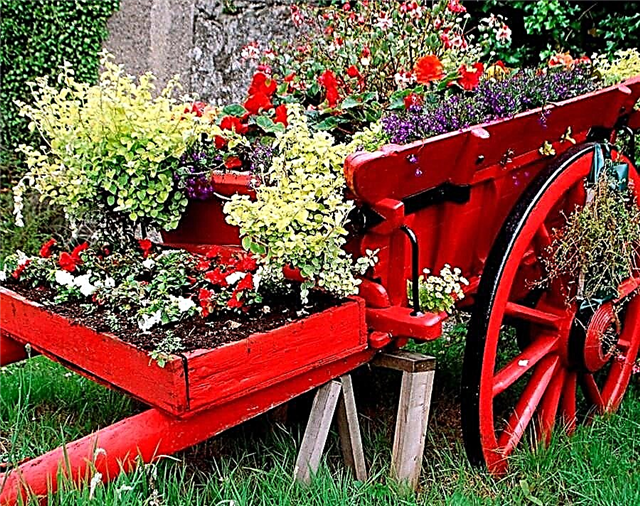
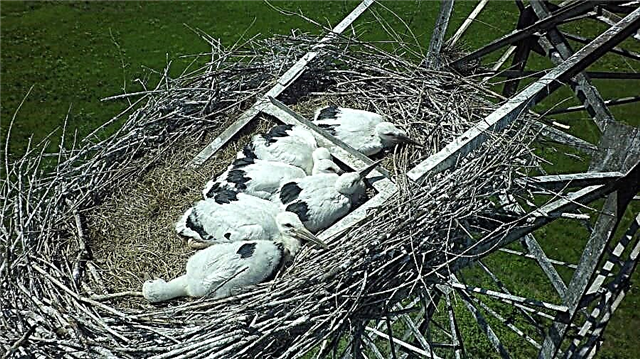
Concrete is much less commonly used, but due to its durability it is suitable for a driveway leading to a garage or parking spaces.

Phosphorescent Stone
The category is very special. In the light, they are no different from other decorative elements and are completely invisible, but at night you will notice a bright glow.

That is why it is worth using it to completely pave the tracks or simply decorate the curb. Also, luminous stones for the garden and landscape will fit the sides of pools, ponds and fountains.

The functional side of using stone
If we talk about the use of stones in the landscape of the site from a functional point of view, we can distinguish several main advantages:
- The possibility of zoning the site: the separation of the working area and the recreation area, creating places for the privacy of the owners or for receiving guests,
- The possibility of using large boulders as additional decorative "furniture", which fits perfectly into the overall natural landscape composition,
- The ability to hide design defects or unwanted objects,
- The ability to fill the empty space without using green spaces that require care and attention.

Obviously, the stone is almost an integral part of the landscape, so use it boldly and with imagination.
Where are used?
There are many ideas on how to apply various stones to create landscape design. For example, they can be used to create flower beds in the country, paths and paths, decor fountains, waterfalls, cladding arbors and walls of the house, to create a pond, as well as sculptures for the garden. The use of stones is always appropriate when forming alpine hills and to create a Japanese-style landscape design - in combination with conifers and lamps this will look very impressive and beautiful.


There are a whole host of other ideas where stones can be used - for the design of beds and terraces, as well as in cases where you need to decorate certain areas of the site near a private house.
Types and sizes
All stones in landscape design can be divided into two large groups - depending on their origin, they can be natural or artificial. It is from this criterion that the cost of stones will depend.


There are many different stones - both natural and artificial - that can be used to equip and decorate the site - each type of material is suitable for a specific purpose.
Natural
If you want to use natural stone to design your site, first of all you need to be guided when choosing a variety for its properties and characteristics.
The most important requirement for this material is its strength, on which the durability of the created design will depend. It is also important that the natural stone has an attractive appearance, then the design you created will be beautiful and unique.


Let us consider in more detail the properties of natural stonesthat are often involved in landscape design:
- Granite - This stone has many components in its composition: natural mica, quartz and spar. This variety is considered universal and has a fairly wide area of use. The color of the stones can be different: in graphite, gray and green colors. Sometimes they may also contain blotches of light pink, red, orange or blue. The stone is very attractive in appearance, and also has excellent performance characteristics, which is why the cost of the material is quite high,


- Gneiss - has a composition similar to granite, but differs in color. This stone also has high strength, can be used to form a side fence,

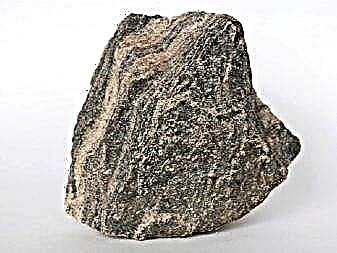
- Basalt - the nature of its occurrence is volcanic lava. It has a porous structure. It is found in grayish, smoky green, ashy shades. It has the same high strength as granite. It can be used to design an alpine hill,

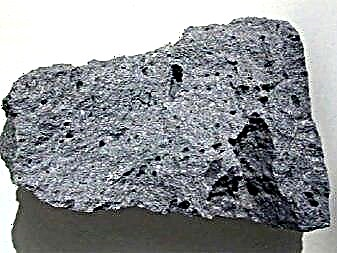
- Sandstone - the stone has a sedimentary origin, it includes substances such as quartzite and carbonate. The presence of iron ore in the composition makes the material very durable. The color of the mineral includes white, red, beige, green, brown and gray shades,


- Slate - the nature of the origin can be either metamorphic or sedimentary. This natural material has a surprisingly beautiful diverse color in gray, graphite, burgundy, blue, yellow and red shades. The most valuable are those instances that have various natural patterns,
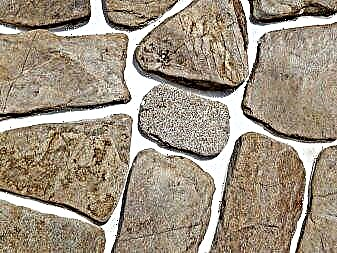

- Limestone - A beautiful, but short-lived mineral. It has a sedimentary nature. Its disadvantage is that it can crumble quite easily. However, in the landscape it looks spectacularly and contrastfully when decorating the green zone, since the mineral itself has beautiful golden yellow hues,


- Marble - the structure of this stone is crystalline. The material is quite durable, but still inferior in its characteristics to granite and gneiss. It has a bright color, it is also very easy to process it, giving the desired shape,
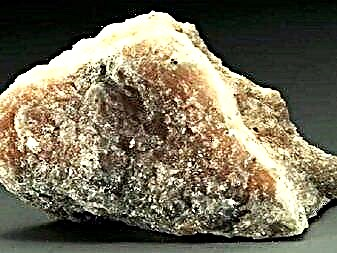

- Porphyry - high-strength material of reddish shades. Due to its characteristics, it is suitable for widespread use. However, it is difficult to process and crush,


- Tuff - stone with a porous structure, not heavy and soft to the touch. It has a unique property of absorbing moisture, which is sometimes necessary when designing a landscape design.
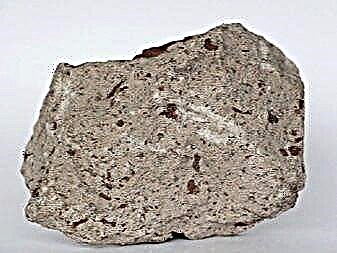
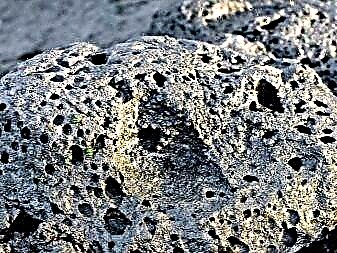
Artificial
The main advantage of artificial stones is their low cost in comparison with natural ones.
The most common are:
- Brick - This material received wide popularity many years ago. It can have different shades, different color saturation. It has good characteristics, quite durable and resistant to destruction. Due to these properties is very popular in landscape design,
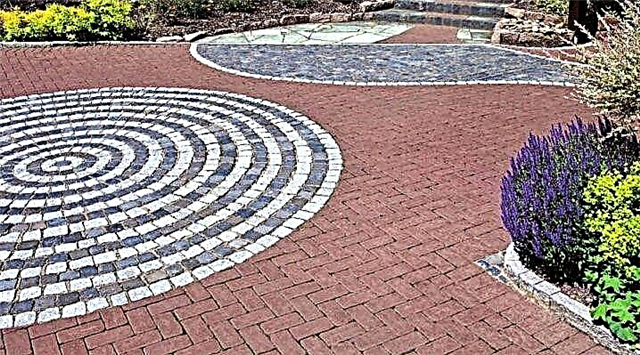
- Concrete - very durable artificial material. Thanks to the use of special additives, various interesting colors can be achieved.

- Glowing stones can be attributed to a separate group of artificial stones developed according to the most innovative technologies. They appeared on sale not so long ago, so today they are still rarely seen in landscape design, but they are gradually gaining more and more popularity. Thanks to the use of this type of stones, it will be possible to enjoy the beautiful landscape design not only in sunlight, but also at night. Such decor makes the atmosphere fabulous and cozy.
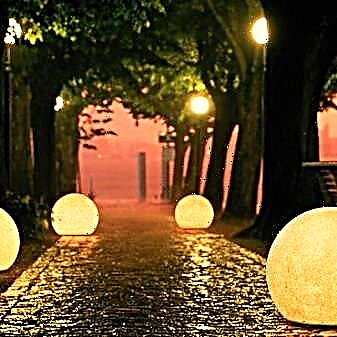

The following types of luminous stones exist:
- The hollow tank into which the LEDs are integrated. Such products are distinguished by their very long service life - about ten years. However, the cost of products is quite high. In daylight, the stones look like translucent glass fragments,
- Plastic products inside which the catalysts are located. Such devices are very affordable, easy to maintain - they are independently charged in the daytime from solar energy. You will only need to periodically wash away a layer of dust from the stones, you can do this with ordinary water, and then leave the product to dry. In addition, the plastic stone is quite light, and in daylight it looks as much as possible outwardly like a natural stone,
- Natural and artificial stones can also be painted with paints containing luminescent particles. Using this method, you yourself can turn any design elements into a decor that will glow in the dark. After the paint has completely dried, you can cover the product with varnish on top, which will protect the luminous coating from various environmental influences.


The shape and size of the stone is also of great importance in the design of the landscape.
By size, stones can be divided into the following groups:
- Stone crumb - This decorative material is most popular among designers, since it can even be used to design the most complex surfaces of any shape. Stone chips are often used in the design of parks, as well as plots for private homes. To produce screenings, rocks are crushed. Suitable stones are marble, quartz, jasper and others. Stone chips - a durable, reliable, inexpensive and affordable material, which is widely marketed in a wide variety of colors,


- River pebbles - It is formed under the influence of water, which grinds ordinary stones for a long time, making them smooth. Most often used in the design of fountains, waterfalls and ponds - those decorative elements that contain water. Pebbles come in many sizes and colors. Larger pebbles are called pellets,
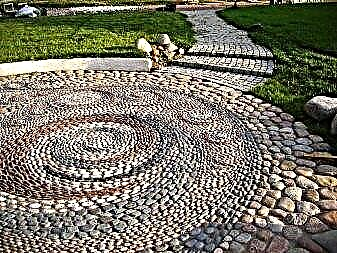

- Blocks and boulders - They are also very popular and very often used in landscape design. They are quite large in size, differ in various forms. The blocks are acute-angled, and the boulders are rounded, similar to river pebbles, only of very large sizes. Boulders and boulders become central figures in the composition and attract the main attention. They are able to emphasize the power and beauty of nature,

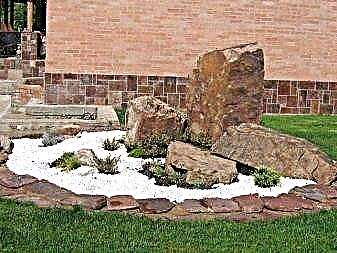
- Cobblestones - have a streamlined shape and medium size,
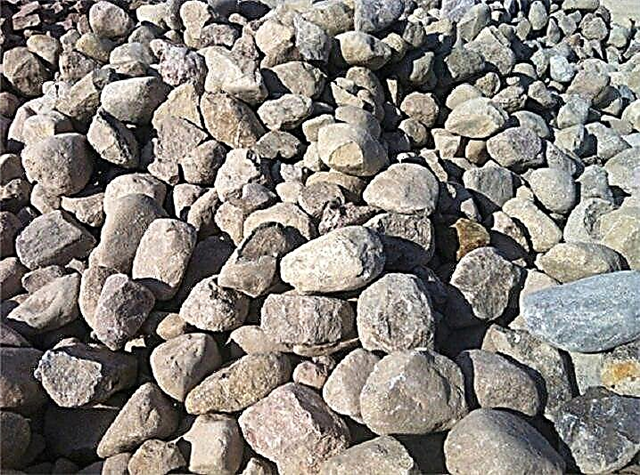
- Crushed stone - formed during ore mining. The size and shape of the material may be different, it will depend on the grinding method used.

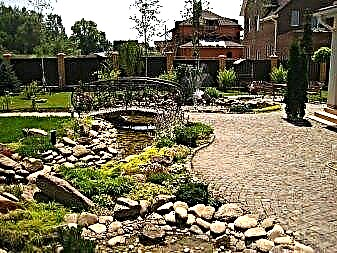
How to choose?
When arranging the landscape for a summer cottage, it is necessary to carefully select different stones to realize each specific idea. Listen to the recommendations of specialists and choose those types of stones that have the necessary properties and characteristics, in which case the design you created will delight you for a very long time. When choosing stones, also consider the size of your land, if it is not very large, then it is better to select stones of medium and small sizes.

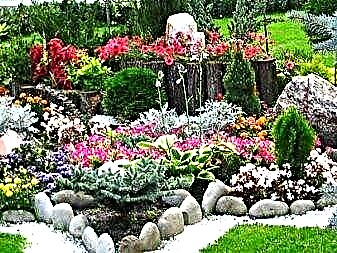
It is also important to select such stones that will aesthetically fit into the overall composition. The elements of landscape design that you have developed must be beautiful and stylish, as well as strong, reliable and durable.
Painting and decor
Creating a decor for the landscape from artificial or natural stone will not be difficult, anyone can do it yourself, especially since you can find a lot of ready-made interesting ideas and solutions.
For example, if you want to combine stones with any plants and flowers, you can use slate, granite, and limestone rocks.

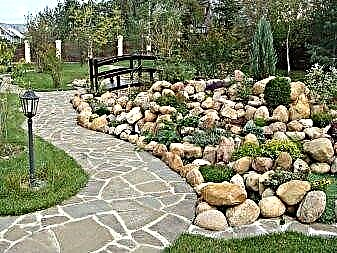
When designing rock gardens, you should not use too many rocks, as this will only emphasize the artificiality of the created slide. The stone used in the Alpine hills can be both monophonic and color. All decorative stones can be painted in the desired color, and in order for the paint to last as long as possible, it is necessary to coat the surface with varnish after painting.
If you want to create an artificial pond on your site, you can use granite and slate rocks, as well as river cobblestones to design it. But limestone and marble in this situation is better not to use, because under the influence of water these rocks can affect the composition of the soil, which ultimately can have a negative effect on plants.
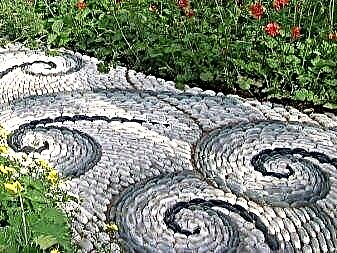

For the construction of garden paths, you can use basalt, granite, slate or concrete. And it is better to refuse the use of limestone and sandstone in this case, since they are not designed for heavy loads and will begin to collapse quickly enough.
Stones like granite, gneiss and concrete are suitable for the decoration of stairs. However, it is very important that the steps are not slippery, for which it is necessary to apply special processing of stone material.


Stone white sculptures and architectural elements look very impressive and beautiful - benches, flowerpots, lamps and much more.
Examples
And finally, we give you some examples of successful design of landscape design using various types of stones.
Original and unusual decorative frames for flower beds with flowers and other plants.
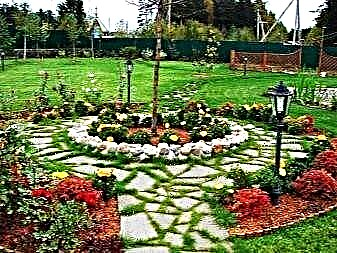
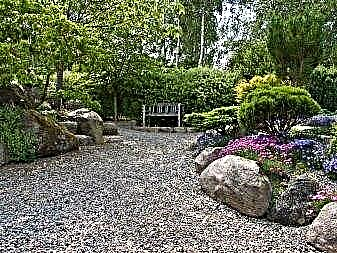
Stone decor of artificial ponds.


Stylish design of a dry stream.




About what types of decor of stones there are for landscape design, see the next video.
Accommodation options
You can use stones in landscape design in different ways. There are all kinds of ideas for implementation. Good options are:
- flower beds with boulders of different sizes,
- functional or decorative paths, concrete paths with crushed stone,
- decoration of fountains, waterfalls, ponds,
- freestanding decorative elements,
- stone sculptures.
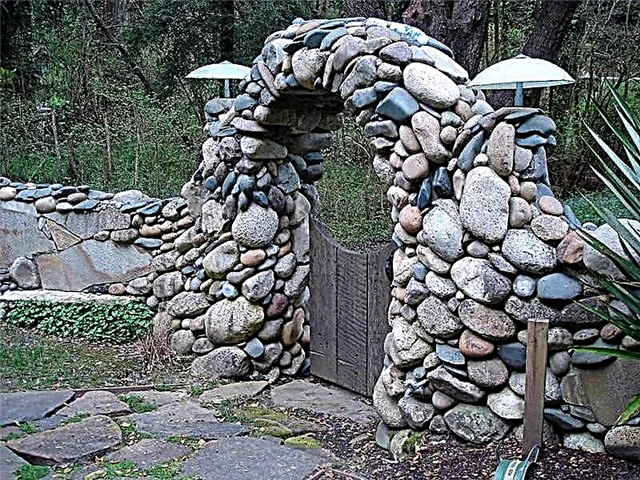
In some styles, it is impossible to imagine the lack of decoration in the form of stones. For example, alpine slides or Japanese compositions. In combination with coniferous plants, stones look incredibly impressive.

Types of material
The stones on the site can be natural or artificial. The cost of the decor depends on the origin of the material.
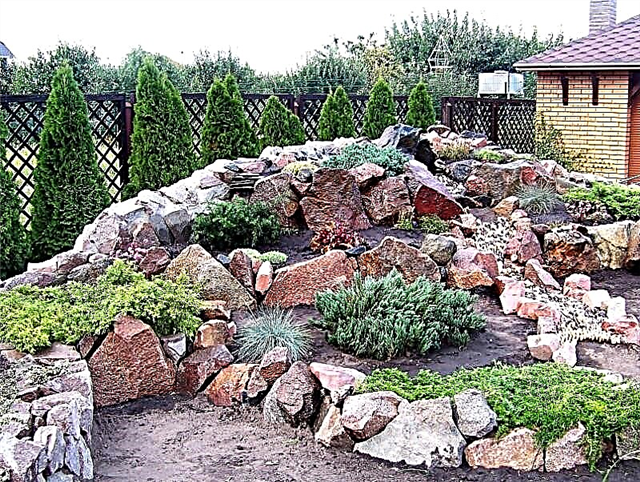
The easiest option: to master the instances present in the territory or collected nearby. For some purposes, this approach may not be enough.

Natural stones
The use of natural stones impresses the essence of landscape design. When choosing copies for designing the territory, they are guided by the strength and appearance of the material.
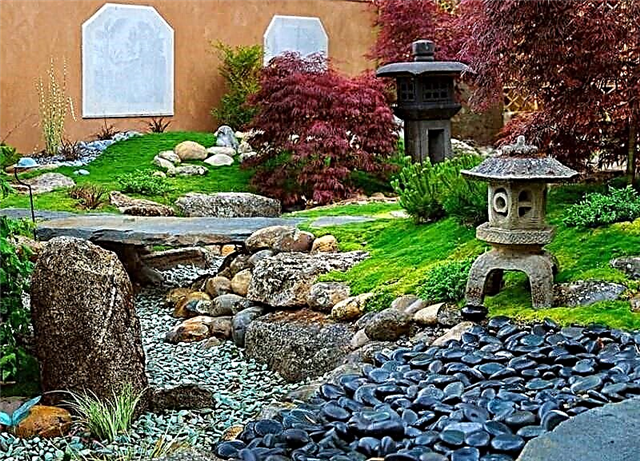
The main landmark will be the purpose of the breed. There are several popular varieties.

Granite
The composition of granite is diverse. It contains: mica, quartz, spar. This determines the variety of formation colors. Typical coloration is in the gray-green spectrum. There are instances interspersed with red-orange, pink, blue tones.
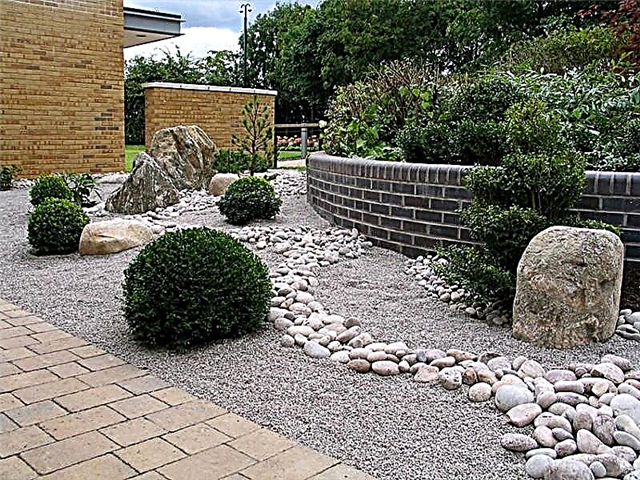
Granite is considered a universal option. High performance, attractive appearance play a role in increasing the cost of the material.
Gneiss
Shale rock with quartz, feldspar in the composition. The variant is widespread, similar in properties to granite, but it undergoes wear faster. This determines a lower cost.

Gneisses are layered, which is externally reflected by the presence of multi-colored stripes. Used for cladding, curbs, decor.

Basalt
Volcanic origin determines the porous structure of the stone. The option is lighter than granite, has similar strength. Outwardly interesting.

There are smoky gray specimens with a beautiful green or ash tint. The option is often used to design alpine slides.
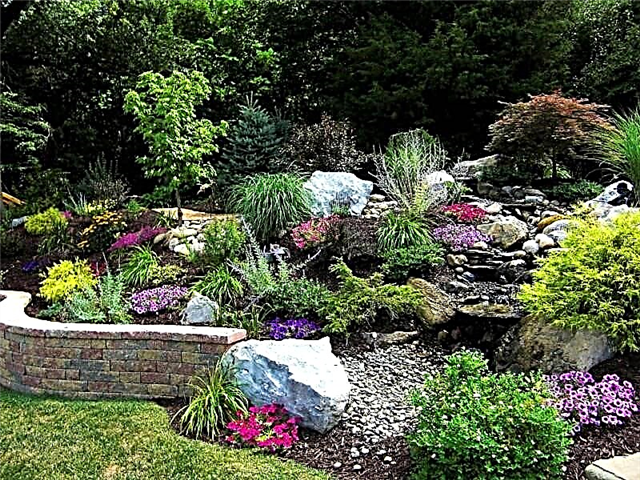
Sandstone
Rock with quartzite, carbonate, iron ore in the composition. High strength option. The appearance of the mineral due to multi-colored blotches is elegant. Interesting coloring allows you to create an unusual decor in the form of stones for the garden and landscape.

Slate
Not very durable, but surprisingly beautiful in appearance mineral. Gray, burgundy, yellow, blue blotches allow you to perfectly plan product design. Perhaps the presence of a natural pattern. The unique design enhances the value of the item.

Limestone
The natural golden yellow color of the mineral distinguishes the rock from a typical series. A colorful decorative stone will be a wonderful decoration of the green zone.

Often used by baby as a decoration. Hardness, durability of the breed is minimal, which limits the range of use.

Marble
Ideal for creating respectable garden sculptures. The option is moderately durable, easy to process.

The crystal structure, a variety of colors positively affect the external characteristics of the material. The high price limits the use of marble for garden design.
Concrete
Elementary in composition, easy to use material. The option is strong, durable. By adding dyes in the manufacture of the material, it is easy to achieve any appearance. It is permissible to perform surface painting of garden stones.

Crushed stone
Material with different sizes of components. Individual elements are pointed, look rustic. Ideal for embankment.

The choice is individual. Much depends on the purpose of the composition. The simultaneous use of different variations.

Features of choice
The principles of choice are based on the size of the territory. A large stone in a small area risks looking ridiculous. Overloading the space is also not recommended. Pile - not only irrational use of the area. Externally, the excess looks heavy.
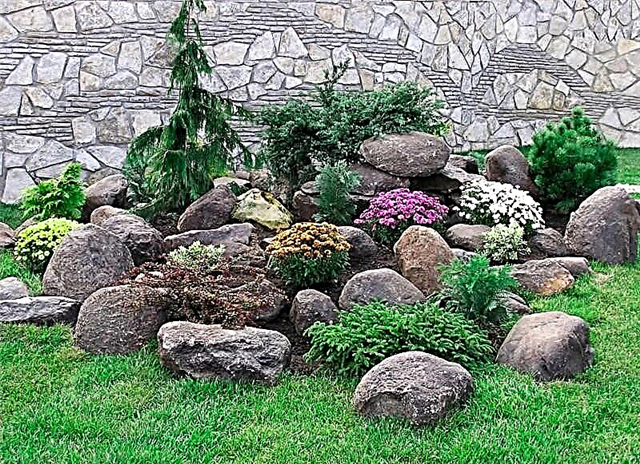
Not the last place is aesthetics. It is important to choose the right shape, size, color. You can work on the design of individual elements or a holistic composition.
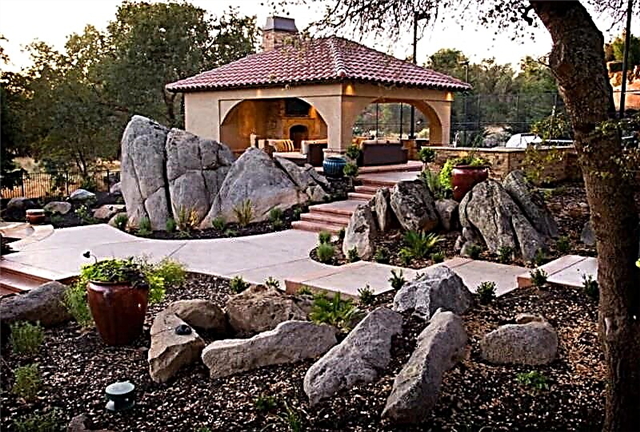
No less significant is the reliability of the design. Stones are important to properly position. The construction should not threaten displacement, destruction.

The use of stones in garden design is growing in popularity. This is due to the special color of the objects. The designs are practical, look stylish, and are durable.




